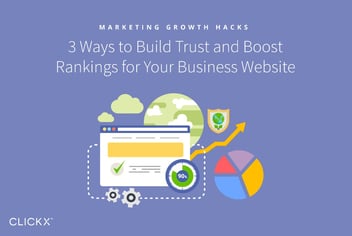12 Ways CRO Leads Businesses to Better Marketing ROI

Introducing customers to your brand is only the beginning. The end goal of making a sale and creating a loyal customer base requires more. This process of courting potential customers to converting your brand is known as conversion rate optimization, or CRO. Neglecting CRO means throwing away what gets the most sales on any ecommerce site. CRO involves a variety of techniques implemented by marketers to encourage potential customers to visit, explore, and make purchases on ecommerce websites. When approached properly, CRO is tailored specifically to a company’s needs.
CRO is complex, but can be broken down into components that make it easy to understand. [Tweet “Learn 12 ways that CRO can lead to better marketing ROI for your business”]
1. Ongoing Approaches
CRO can’t be implemented once and then forgotten about. As a strategy that relies on continuous attraction, re-attraction and retention of customers, it is an ongoing process. There is no “best” when it comes to CRO; your best can always be built upon with further testing and refining. CRO should be a part of your business for good if it’s going to work properly. There is always room for improvement, and there are always new customer demographics to attract and retain. Sticking with CRO means continuous growth in terms of the bottom line.
2.Focusing on Revenue
This is the goal of any CRO: revenue. It can be easy for a marketing team to get bogged down in the technicalities and specifics of a CRO campaign. However, to work properly, every technique and strategy implemented by a CRO team must be for the end goal of profit. If a technique is more costly or complicated than the revenue it promises to yield, it should be abandoned.
3. Adapting To Change
The Internet is an ever-changing entity, and CRO techniques must change with it. Technologies are developed, old strategies fall by the wayside, products cease to be popular or useful, and design trends ebb and flow. To create an effective CRO approach, you must be willing to completely change everything about your marketing in an instant. This is part of the CRO process, and can mean sacrificing past work. However, the bottom line is profit. Being adaptable, quick and unafraid of taking risks means big revenue for any company implementing CRO.
4. Retargeting Past Visitors
Ninety-five percent of website visitors never return to a site. With statistics like these, it becomes clear just how important it is to prioritize CRO. Simply attracting customers once isn’t enough; retention is key. Retargeting previous visitors to a site is an excellent strategy for profit. It doesn’t cost as much as other kinds of online advertising and tends to yield better results, as it’s targeting people who have already expressed an interest in your product or brand. When it comes to optimizing revenue, retargeting is an essential part of CRO.
5. Look Beyond Landing Pages
A landing page is distinct from a brand’s or company’s main ecommerce website. Customers usually reach a landing page as a result of SEO, and they guide customers toward conversion. For many, the landing page is their only CRO strategy. This is a big mistake.Failing to look past the landing page results in an incomplete CRO strategy that doesn’t do much to help your bottom line. A landing page is a great starting point for a comprehensive CRO strategy, but it’s only the beginning. CRO requires much more than just changing a landing page. By recognizing this, you can easily have an advantage over your competitors.
6. Consistent Testing
The biggest part of any CRO campaign is testing—and testing again. And again. Constant testing is how an effective CRO strategy is created. CRO relies on innovation to be effective, but innovation without testing is a shot in the dark. A solid marketing team isn’t afraid to spend most of their time on testing. Each testing phase leads to a refining phase—which is followed by more testing. CRO is a painstaking process, but does wonders for ecommerce.
7. Search Optimization
The “conversion” in CRO can only happen as a result of Internet traffic. Internet traffic is generated by search engine optimization, or SEO. SEO is so basic that most small companies today are familiar with rudimentary SEO strategies, but this only underlines the importance of a solid SEO strategy. CRO is built on SEO. The best CRO team in the world can’t do anything if there is no traffic on their ecommerce site or landing page. There are lots of SEO strategies for raising traffic, and they are the basis of a solid CRO campaign.
8. Content Management Systems
Your CMS is the platform your ecommerce site uses to function. With a poor CMS, your site isn’t user friendly. This decreases traffic significantly, as potential customers just click away to a site they can use more easily. It also decreases sales. If the shopping cart is confusing or hard to find, customers are unlikely to buy. A good CMS can be expensive, but it’s a worthwhile investment. The sales lost by a CMS that bounces traffic are extensive.
9. Personalization and Segmentation
Chances are, different parts of your ecommerce site are more profitable than others. Without strategies for personalization and segmentation, there is no way to tell these aspects apart. There are several options for segmenting traffic. Google Analytics is helpful in this area. Segmenting data and reading it properly allows for proper allocation of CRO resources.
10. Analytics and Data Gathering
Unsurprising in today’s world, data is critical when it comes to CRO. It’s a part of personalization, segmentation and testing. Without data and proper data analysis, a comprehensive CRO strategy can’t be designed. Understanding where an ecommerce site is failing and where it is succeeding are essential to making profitable decisions in CRO.
12. Goal-Setting
The primary goal of all CRO strategies is revenue. This is a broad goal, however. An effective CRO marketing team sets realistic, timely goals with the data and information at hand. This allows for the incremental gains in profit that are CRO’s trademark. Goals must be flexible; they may have to be changed at a moment’s notice when new technology, data, or resources come into play. In the ecommerce world, this can happen in the blink of an eye. Set realistic, solid goals to create an effective CRO strategy.
*Bonus* 13. Originality
Like many marketing strategies, the name of the game is originality. With new advancements coming to light daily, there are plenty of opportunities for new CRO techniques that haven’t been thought of by your competitors. With ingenuity and a willingness for quick changes, you stand to create a CRO campaign with never before seen effectiveness.
Conclusion
Ecommerce sites thrive as a result of effective CRO. Proper analysis and utilization of data leads to increases in revenue that couldn’t be approached without comprehensive CRO strategies. With solid CRO, more traffic is generated, bringing in new customers and creating brand loyalty. Customers return to ecommerce sites with good CRO.
Solid CRO can be expensive, and is always time consuming as it relies on continuous testing. However, the benefits to a company’s bottom line as a result of CRO make it well worth it.




